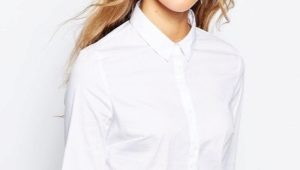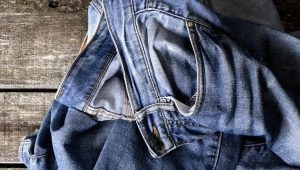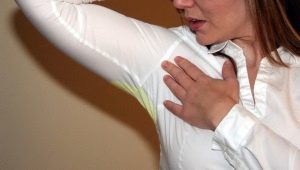How to remove a gouache stain at home?

All artists and parents of creative natures are familiar with the situation when, after the creation of the next picture, not only the canvas, but everything around it turns out to be decorated with bright colors. Therefore, after several hours of drawing, you also have to clean up for a long time. And to cope with gouache stains can be very difficult, and sometimes almost impossible.

Choosing an effective remedy
To combat stains from gouache, you can use different means. Each of them has its own advantages and disadvantages. Let's look at those that work for sure, which have been tested by more than one generation of creators and hostesses.
If you are dealing with clothing, then most likely, to combat gouache stains, select commercially available synthetic. It is worth choosing it carefully, taking into account all the features of your things.
The thinner and more delicate the fabric, the more gentle the product you use to clean it should be. It also matters whether the clothes are white or colored in front of you. Manufacturers, as a rule, indicate all the necessary information on the packaging of the product.
For those who are trying to avoid any "chemistry" in their home, you can choose something from the available improvised means. So, for example, to combat color spots, a simple laundry soap. You can simply wash the fabric using it, or soak the item in a solution of soap rubbed and melted in hot water.

More radically, agents such as acetone work, nail polish remover or even refined gasoline. You need to add them to the water in small quantities. The resulting composition should not be impregnated with the whole thing, but only with the contaminated area.
As practice shows, these products allow you to get rid of paint stains in just half an hour. The main thing is not to forget to rinse the fabric afterwards so that there is no unpleasant odor left.
And if you worked not with simple paint, but with fluorescent gouache, then you should pay attention to such a product as eucalyptus oil. It should also be applied directly to the stain for a few minutes. True, eucalyptus oil is only suitable for working with dense fabrics.

Stain removal methods
As practice shows, removing a gouache stain at home is not at all difficult. You can deal with any type of pollution if you skillfully choose the remedy and know how to apply it correctly.
From clothes
Most often, gouache gets on clothes. And, regardless of whether it is new jeans or a home shirt, you still don’t want to throw the thing away. Yes, this does not need to be done, because you can always wash the fabric and restore its original appearance.
Before proceeding to active actions, it is necessary to assess the degree of tissue contamination. Naturally, fresh stains are much easier to deal with than old stains. Although, if a thick layer of dried paint remains on the clothes, then you can try to gently clean it off with a special brush. In this case, you will not need any additional bleaches and stain removers.
A thin layer of dried paint can be removed from clothes, by placing the item under running water. If the stain is not strongly eaten, then it will go away. Remaining stains will need to be treated with additional products.
If you notice a stain of paint immediately after it hits the clothes, and the color has not yet penetrated the fibers, then you can use a simple laundry soap or some kind of stain remover that does not damage the fabric. If you are working with a stain remover, then you need to apply it to the contaminated area and soak the clothes in warm water. After that, a mandatory step is washing at a low temperature.
In a similar way, you can remove a gouache stain from both a colored blouse and a white shirt. Yes, when working with different types of fabric, it is worth remembering the fact that each material requires its own approach. So, for example, it is much easier to work with synthetics. But cotton, linen and other natural materials absorb bright pigment much faster.

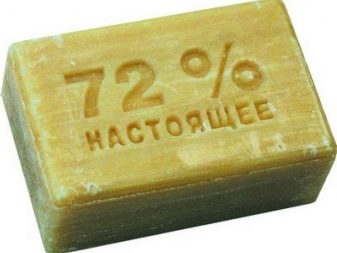
It is even more difficult to remove the dye from mixed fabrics, such as jeans. But such material as dense natural denim is not so delicate. This means that more radical cleaning methods can be tested on it.
For example, use ammonia, which can be found in almost every home. Working with ammonia is very simple. Protect your hands with rubber gloves and apply it to the gouache stain with a cotton swab or swab. It is advisable to move from the edges to the center so that the stain does not spread further. After you have treated the entire area, the clothes should be set aside for half an hour and the alcohol should be allowed to penetrate deep into the fibers and remove the pigment.
After that, you can wash your jeans using the usual powder or the same laundry soap.
Another method that is not particularly gentle on the fabric, which is suitable for denim products - combination of vinegar and gasoline. Here you will also need durable rubber gloves and cotton wool. Vinegar must be preheated, mixed with gasoline in a ratio of 1: 1 and applied to the fabric. Keep this explosive mixture for no more than twenty minutes. After that, you can rinse.


If the fabric is more delicate than thick denim, then you can find more gentle stain removers. So, if you have a stain left on a beautiful white blouse, then you can treat it with a stain remover in the form of a spray.
This is a very good way to deal with stains, because the spray is simply sprayed onto the surface of the fabric, and not rubbed into it.
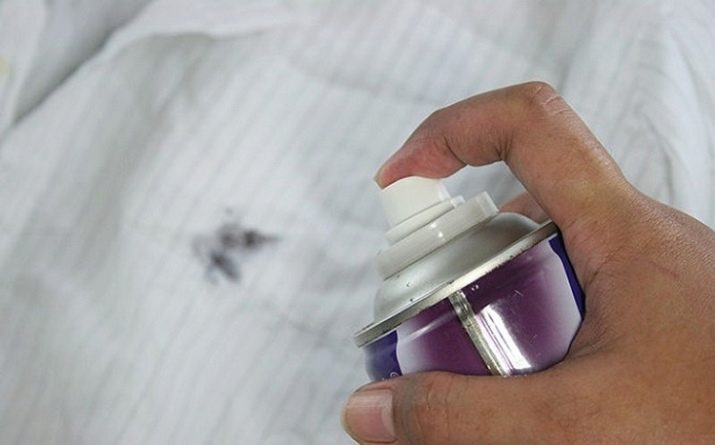
From carpets and furniture
Very often, not only favorite outfits, but also furniture become victims of a creative impulse. It is also possible to remove gouache stains from textiles and carpets, so do not despair.
First of all you can try carpet cleaner. Anyone will do, but most often housewives choose products in the form of a powder that needs to be dissolved in water. This powder is whipped into a dense foam, which is applied to the stained surface. The foam will disappear in a couple of minutes, after which the contamination must be additionally wiped with a brush.
As an alternative to such a product, ordinary washing powder can also be used. It also foams up. You can also apply this foam composition to furniture, without fear of damaging the textiles.

Another effective way to remove a stain from the surface of a carpet or furniture is to combine a simple dishwashing detergent with glycerin. Such a mixture is able to cope even with dried gouache.To do this, scrape off the dried layer of paint with sharp scissors or a brush, and moisten the remaining stain with a mixture of detergent and glycerin. Leave this mixture for several hours so that it completely soaks the stain.
You can also try to remove the pigment with a spoonful of vinegar dissolved in a glass of clean water. The carpet must be thoroughly soaked with this solution. After a few hours, be sure to wash everything off with warm water.


From wallpaper
Much harder to wipe the paint off the walls. Especially if, when making repairs, you chose paper wallpapers. But in almost all cases, it is possible to save the situation and remove a bright spot from the wall.
It is easiest to wipe gouache from those surfaces that do not absorb moisture. These include lacquered wood, glass, porcelain, metal and plastic. If the walls of your house are finished with wood panels or tiles, for example, then you should not have problems cleaning the walls. Just wipe the surface with a damp sponge.
Thick vinyl or non-woven wallpaper can also be cleaned. True, this is a more complex process. Here you will need to dilute baking soda or detergent in warm water, moisten a sponge in this liquid and clean the wall with it.
If you have paper wallpaper glued on, then you will not be able to completely remove the stain, you can not even try to wipe it off. It is better to choose a neat piece of wallpaper or a beautiful picture to cover the stained part of the wall or cover it.
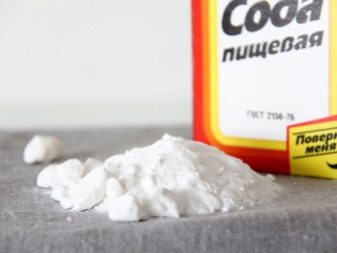

From books
If a stain of paint has fallen on a book, then it is also almost impossible to remove it. All you can do is carefully remove the gouache from the textbook cover. If the pages themselves are stained, then nothing can be done about it, since the paper absorbs the pigment very quickly, and The use of water only exacerbates the situation.

From plastic
It is much easier to remove the entire palette of colors from the plastic. Walk on its surface with wet wipes, a sponge or cloth soaked in water. And your problem is solved.

Helpful Hints
If you or your child loves to use gouache, then these tips will definitely come in handy.
Firstly, all creative people need to stock up not only with paints and brushes, but also with special protective clothing. An apron to protect your outfits can be bought or ordered at any art store. And you can even sew with your own hands from the remnants of the fabric. You will definitely not feel sorry for such protective clothing. And if paint gets on it, then it can be perceived as part of the decor.
Additionally, you can protect the surrounding area. For example, you can highlight dedicated space for creativity. There you can hang a cloth to protect the wallpaper from splashes. You can also just sit in a room with tiled or plastic walls, which are much easier to clean from gouache stains.
Take note of the fact that if you are trying to clean the fabric from contamination, then you should not use warm or especially hot water. It is better to use cold water for rinsing, washing, and even soaking.
The fact is that gouache is a paint that consists mainly of natural ingredients that very quickly eat into the fabric when exposed to warm water.
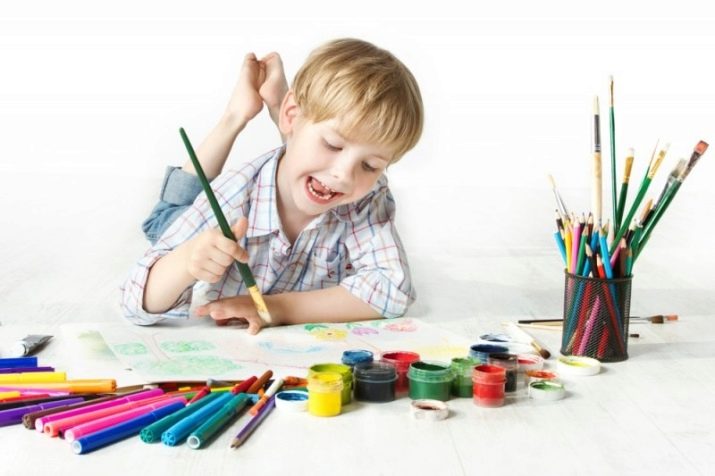
Finally, remember that how quickly and for a long time the paint is absorbed into the fabric depends on what pigments are in its basis. The easiest way to remove art gouache from fabric is a little more difficult than poster gouache. But it is almost impossible to cope with fluorescent.
For information on how to remove paint stains from clothes, see the following video.






















